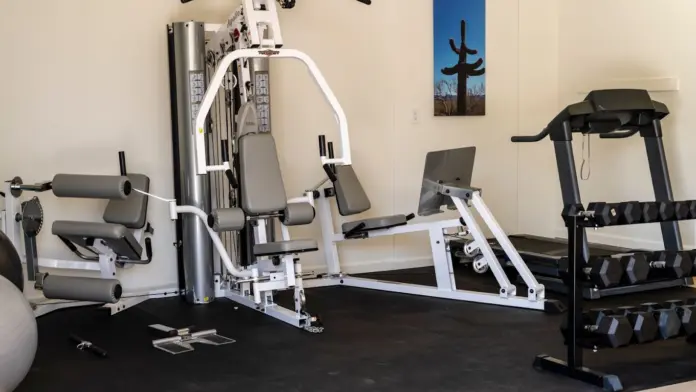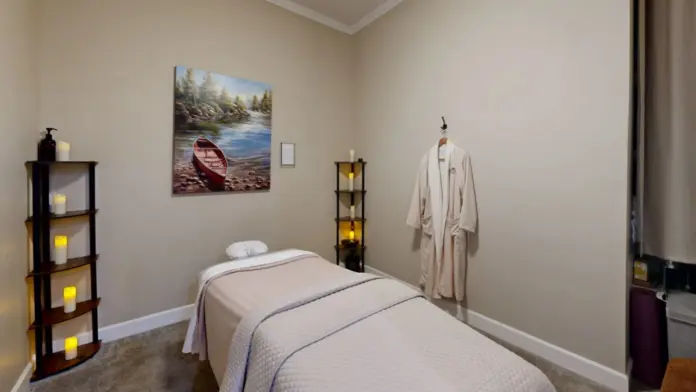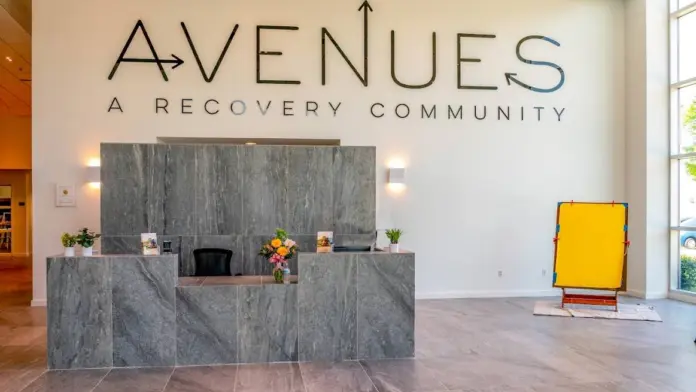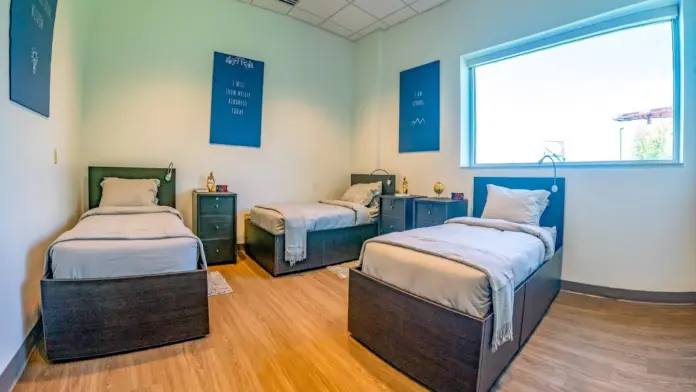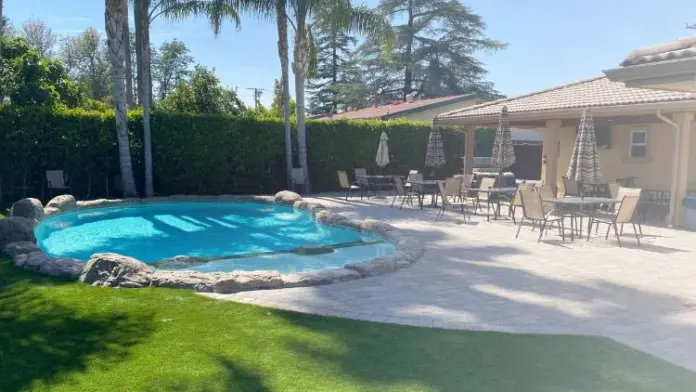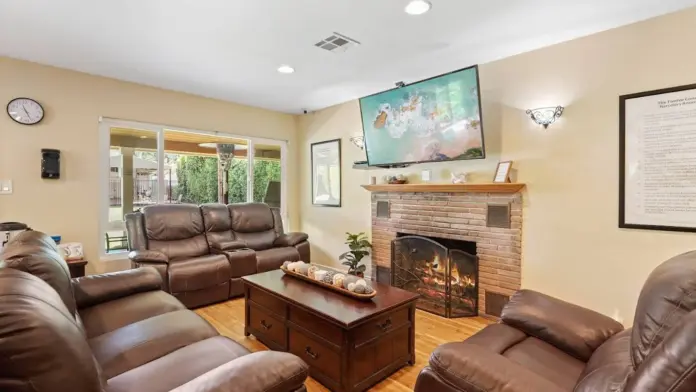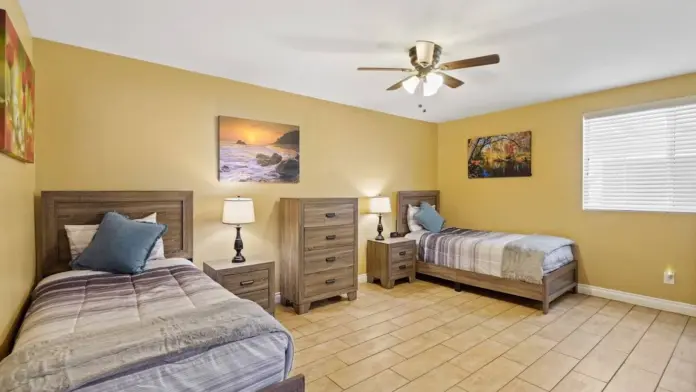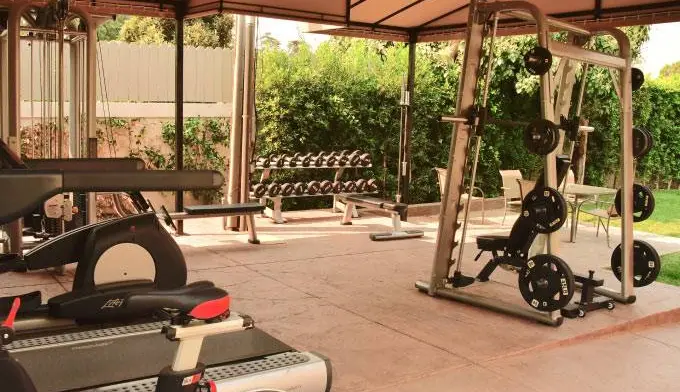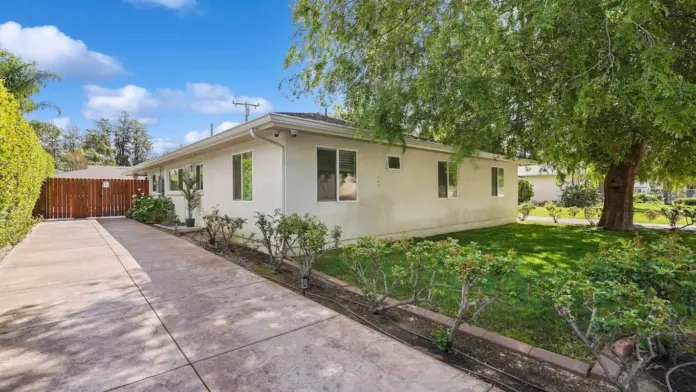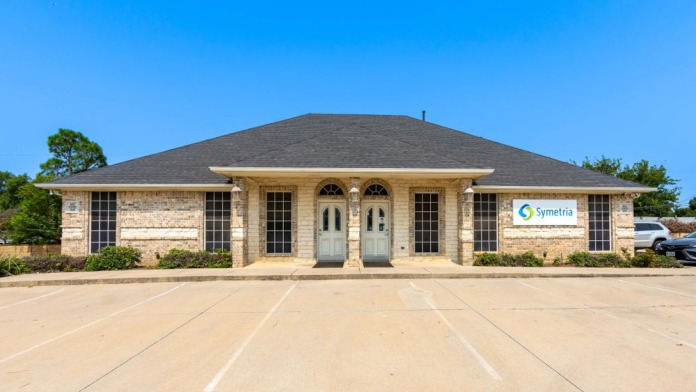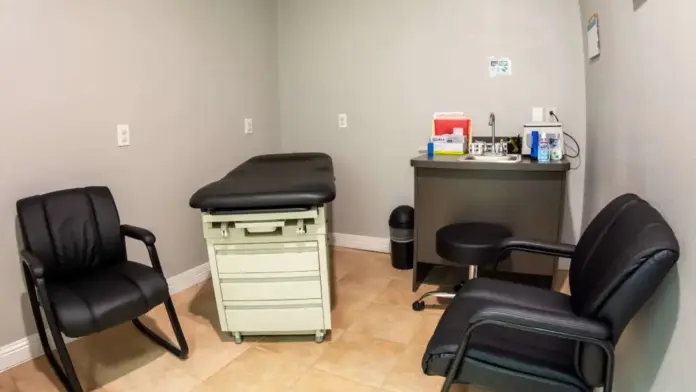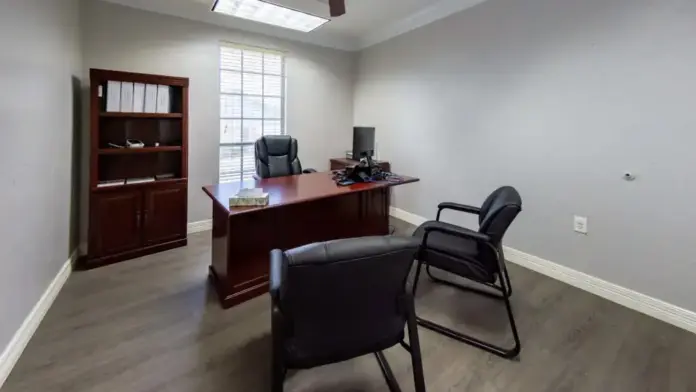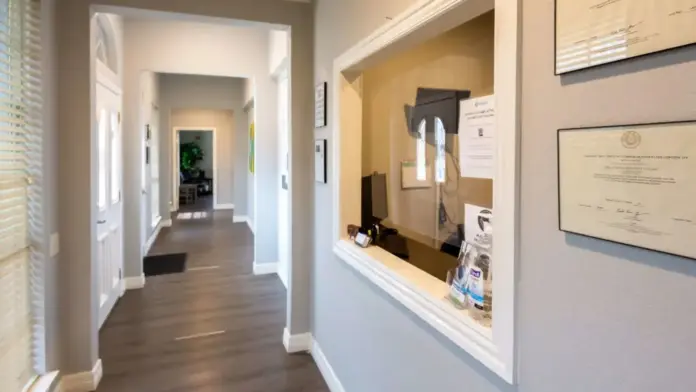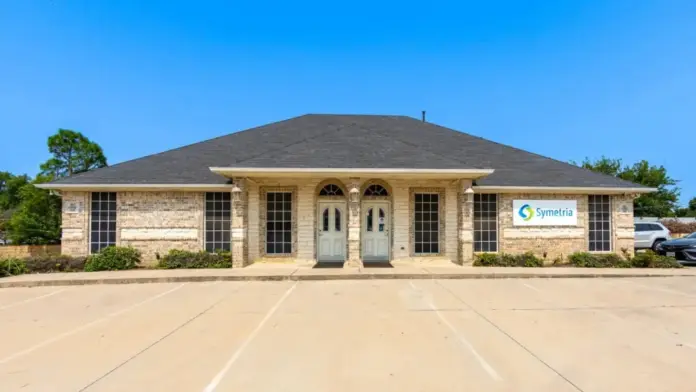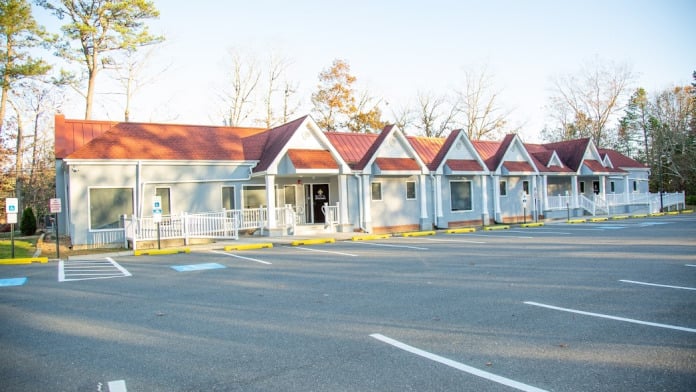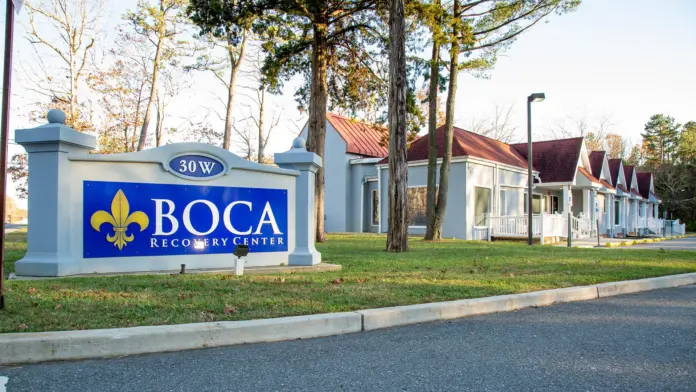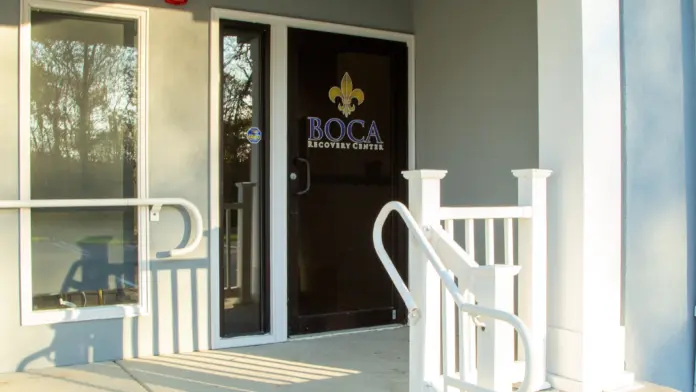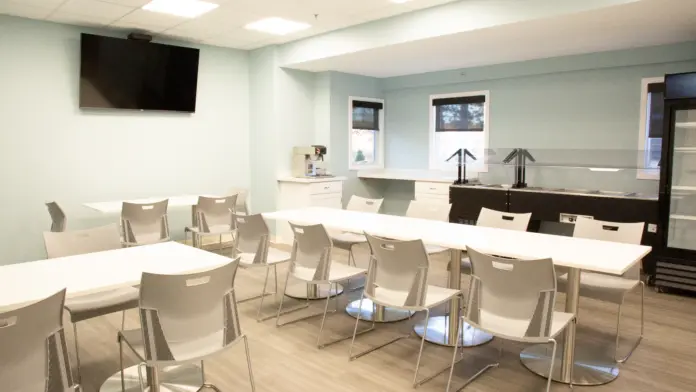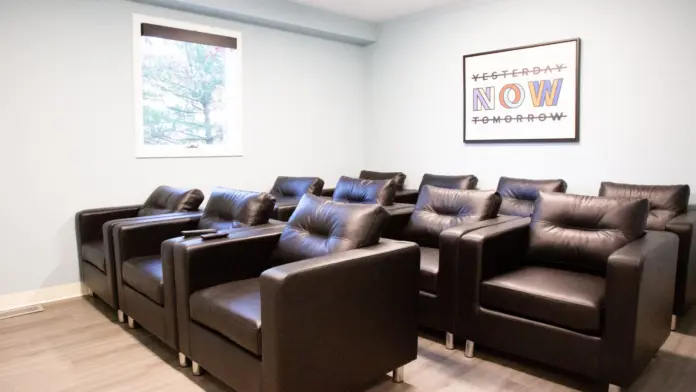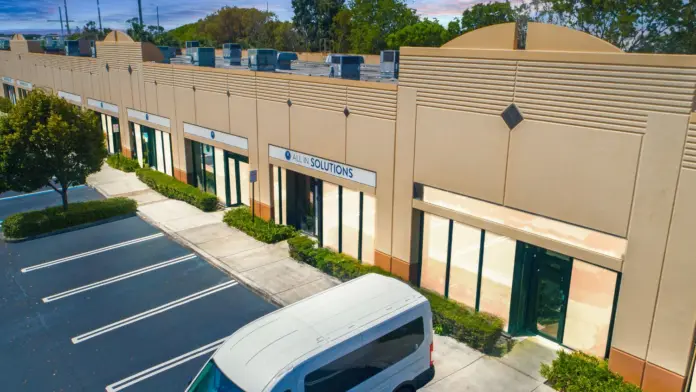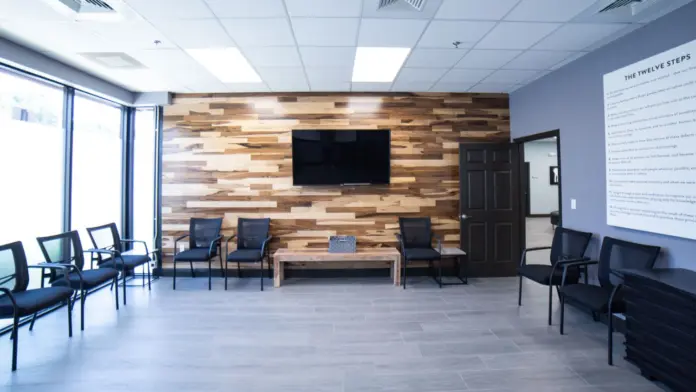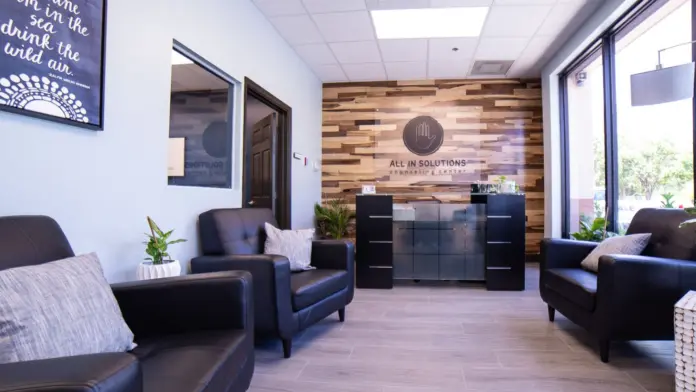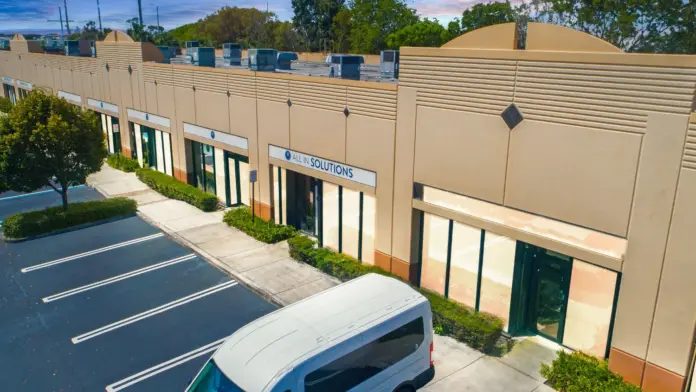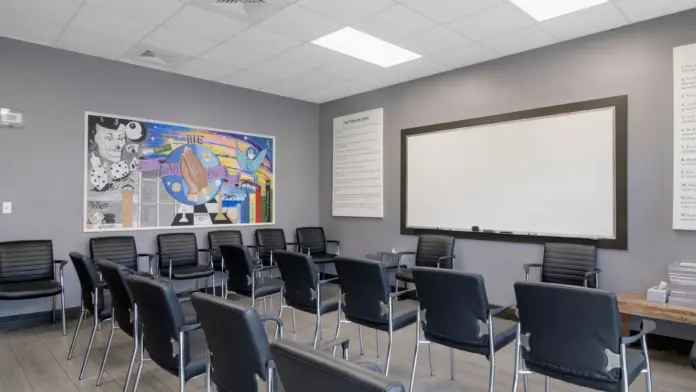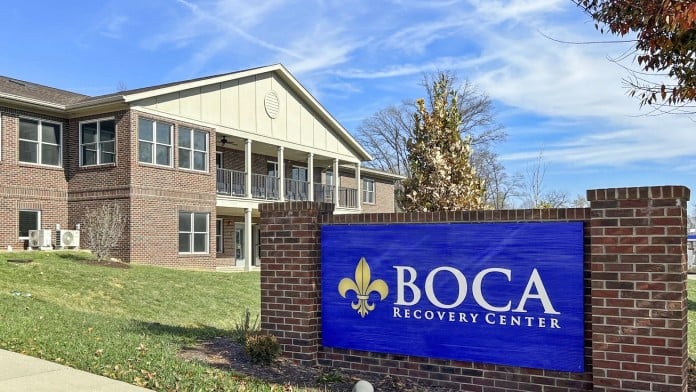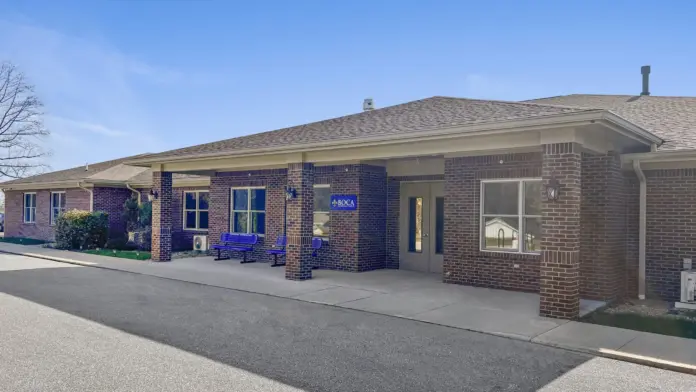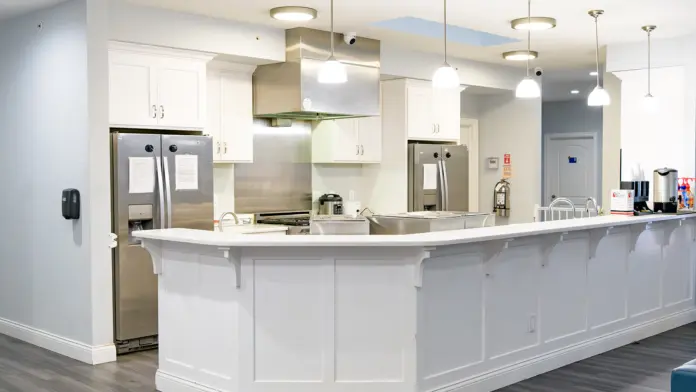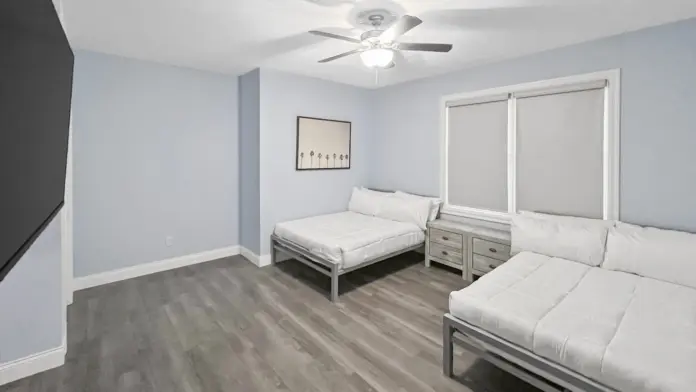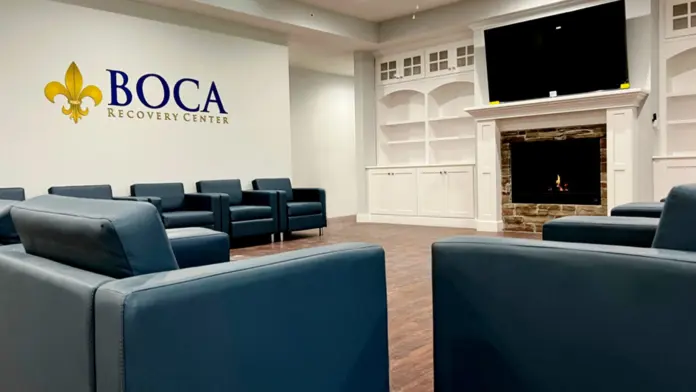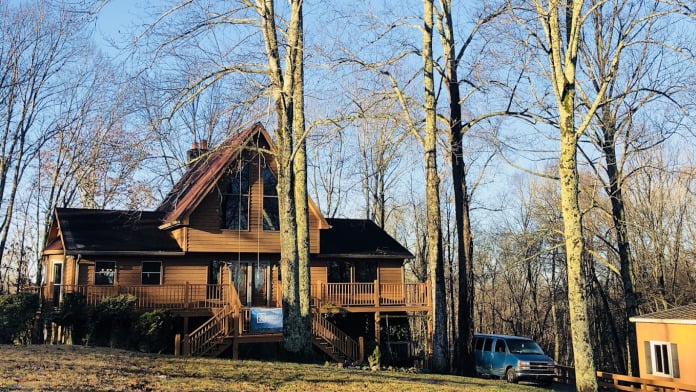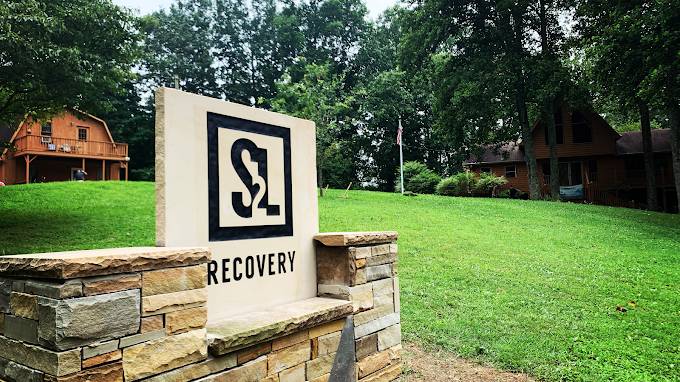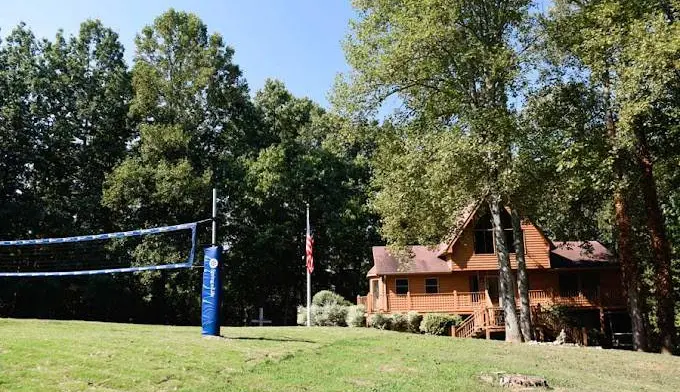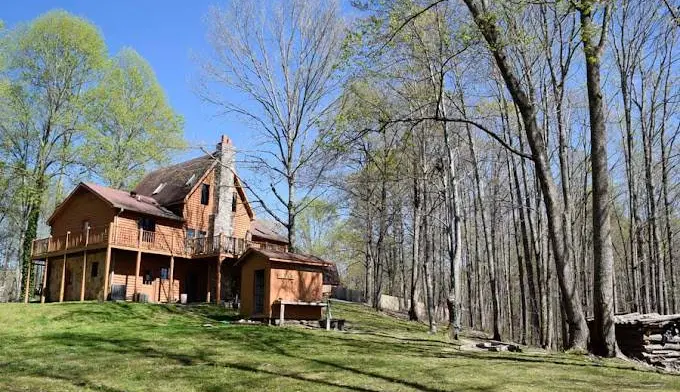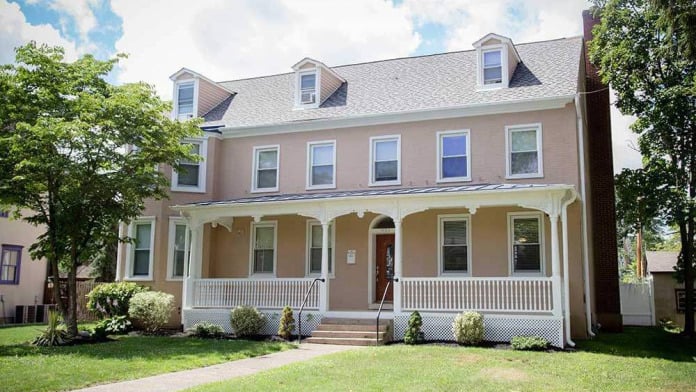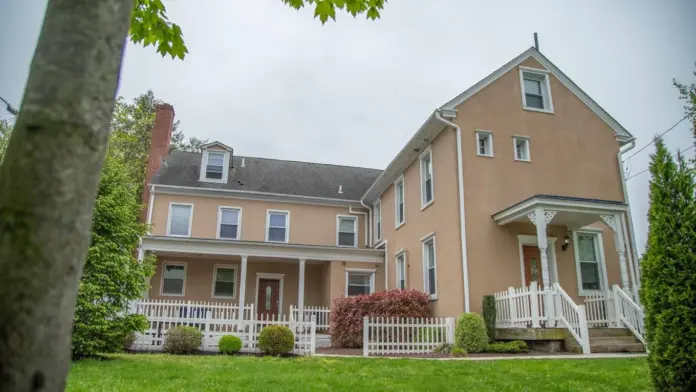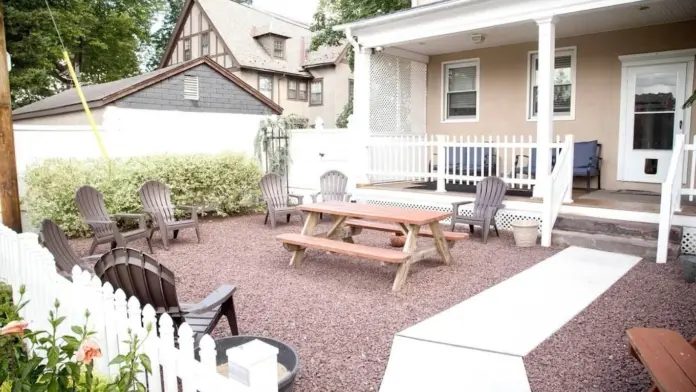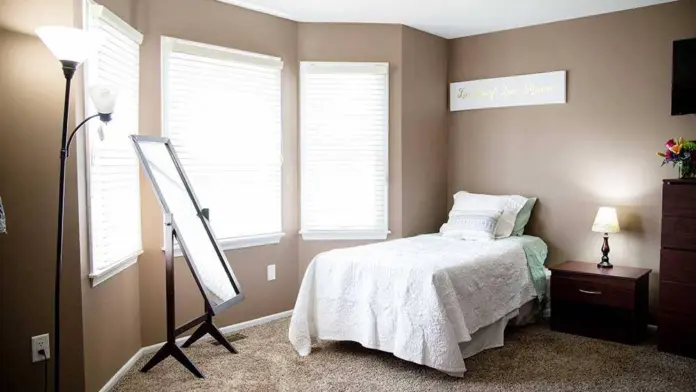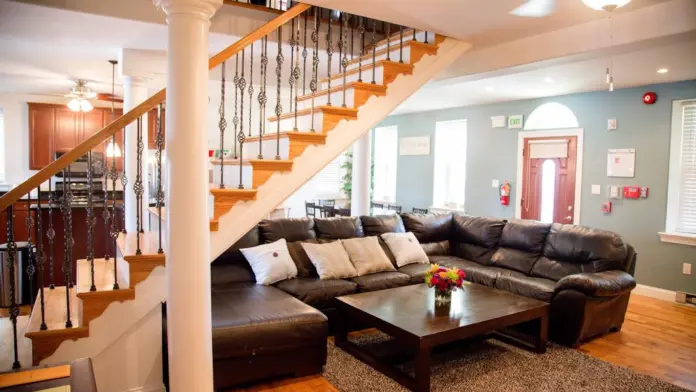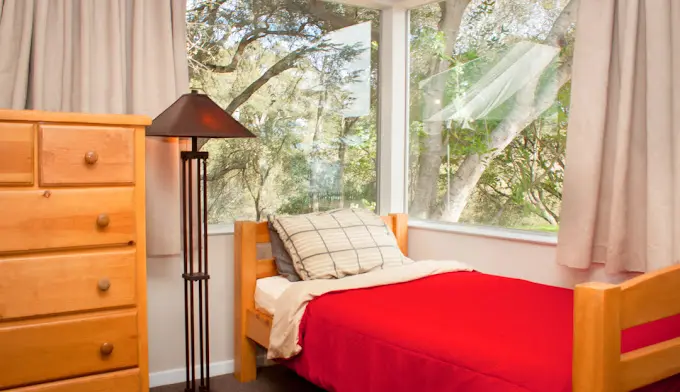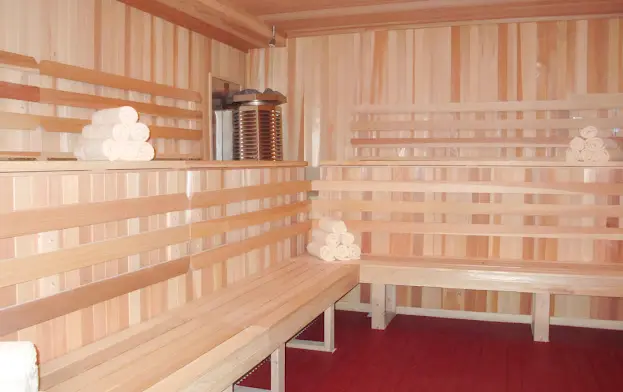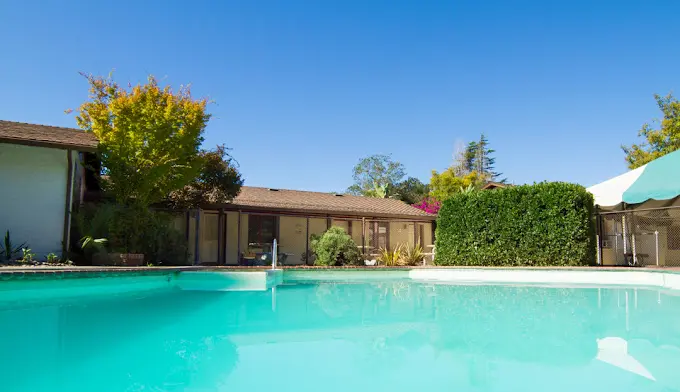
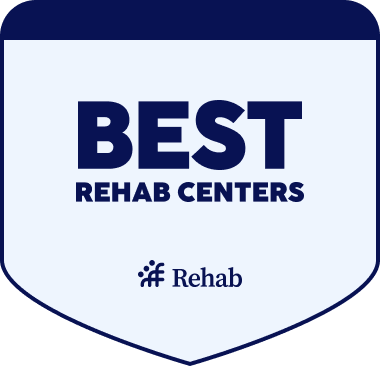
A Complete Guide To Sober Living Homes
Discover how sober living homes and recovery residences provide a safe, structured bridge between drug rehab and independent life. Explore the best sober living homes, what to expect day to day, and how to choose the right fit so you can protect your recovery and rebuild your life with confidence.
Addiction Centers That Offer Sober Living Homes

Sober Living After Addiction Recovery
Sober living homes are a necessary support to help people adjust to daily life after addiction treatment. These structured, substance-free environments help individuals stay accountable and support developing healthy habits, leading to sustainable long-term sobriety.
This resource will teach you all about sober living, including different types of sober homes available, who they’re best for, what daily routines look like, and how to pick the right one. You’ll also find information on costs, funding choices, rules, and legal protections.
Key Facts About Sober Living Homes
- Sober living homes help people transition from rehab to living on their own.
- There are four levels of sober housing, each with different amounts of structure and support.
- Sober homes have rules, drug testing, and peer accountability.
- The ideal residents for these facilities consist of rehab alumni needing structured support together with safe living arrangements.
- Costs range from $600–$1,200/month for standard homes; funding options vary.
- Choosing the right sober home involves consideration of factors like location, structure, and how it fits with your goals.
What Is Sober Living?
One of the most challenging times for someone recovering from drug or alcohol addiction is when they leave a residential treatment center and head back to their daily life.
It can be tempting to return to old habits after they are no longer living under the structure and supervision they received during their treatment program. Especially during the first few months after treatment, the risk for relapse can be particularly high.
In fact, studies have identified that 65% to 70% of people relapse within the initial 90-day period.
A sober living house creates a bridge between life in a residential treatment setting and returning to daily life after treatment. Receiving additional support in the early days post treatment can significantly enhance the chance of achieving long-term sobriety.
This is particularly related to the peer support and camaraderie offered at a sober living home. Here, all residents are on the recovery journey together. As the National Institute on Drug Abuse (NIDA) states, peer support programs during and following treatment can help maintain abstinence.
Here you will find information about sober living houses, what they do, and how you or your loved one can take full advantage of the support of a sober living home and enjoy a life free from addiction.
Types of Sober Living Houses
Sober living houses date back to the 1800s when religious organizations set up residencies where people were required to abstain from alcohol. In the 1940s, more modern versions were established that focused on supporting rehabilitation from substance abuse.
Offering less crowded surroundings and more amenities, these facilities were typically more desirable than halfway houses. Sober living houses are also called sober residences, recovery houses, and recovery residences. All sober living homes differ in how they are managed, the services they provide, and the facilities on offer.
The National Association of Recovery Residences (NARR) identifies four levels of sober living housing based on the type of care they provide:
- Level I — Oxford housing: This is the most common type of sober living home in the United States. Oxford House Inc. is a non-profit, publicly supported organization that provides the network that connects all Oxford Houses.
- These recovery residencies are self-run and self-organized. Oxford House Inc. states that the concept works for both men and women, but not in the same house, and therefore Oxford Houses are single-sex only.
- The optimum number of members per house is 8 to 15. Oxford Houses have a minimum of six people, since this is what is required to be considered effective.
- To be accepted into an Oxford House, current residents usually interview the prospective residents, and they then take a vote to see if the person can move into the home.
- Level II — Monitored sober living homes: Within these facilities, a house manager or resident has often been allocated to manage the recovery house. Monitoring includes regular house meetings and drug testing.
- Level III — Supervised housing: These are more formal facilities with a hierarchy of qualified staffing. There is a focus on developing life skills, and clinical procedures are offered in the broader community.
- Level IV — Residential treatment housing: Often managed by professional healthcare providers, these are the most structured type of sober homes and offer services in-house. They are closely related to standard inpatient treatment facilities, although they may provide some additional freedoms to patients.
Halfway Houses
Halfway houses are a vital transitional stepping stone for people getting out of jail or rehab, and they typically receive government funding to support their operations, with a time limit on how long you can stay. This type of transitional housing provides a structured and time-sensitive environment for individuals to get support and guidance. Research has shown that living in a halfway house can improve treatment outcomes.
Sometimes people use the terms halfway house and sober living home interchangeably. Although they have some similarities, they are not the same thing. Both settings provide a space where residents live as a group and slowly transition back into daily life following a period away from home. However, their operations, funding, and length of stays differ.
Therapeutic Communities
Therapeutic communities (TCs) provide long-term residential care to people through programs that combine holistic recovery and behavioral transformation. These communities rely on peer support, along with responsibility and involvement in the community.
Even though they may not always be classified as sober living homes, the structured environment of therapeutic communities provides support to people who are in early recovery.
Special-Focus Residences
Many sober living homes exist to provide specialized care to meet the needs of particular population groups. These include women-only facilities, LGBTQ+ inclusive residences, as well as houses designed for young adults, collegiate recovery, and faith-based or executive-focused environments.
These specialized programs create secure, safe, and relatable spaces that consider residents’ personal characteristics, including their identity, background, and goals.
How Sober Living Works Day-to-Day
Sober living homes give a structured yet flexible routine to help individuals in recovery get back on track and prepare for long-term independent living. Below is a breakdown of what a typical day in a recovery residence looks like.
Media: Sample weekly schedule
Typical House Schedule
Most sober homes have a predictable routine that helps with responsibility, accountability, stability, and personal growth.
These routines typically include:
- Morning Chores: Residents are usually assigned shared household responsibilities, such as cleaning, yard work, or cooking. These tasks help residents foster a sense of ownership and routine.
- Work, School, or Volunteering: During the day, residents are expected to either work, go to school, attend outpatient treatment, or volunteer. Sober living homes help people rebuild their lives while staying focused on recovery.
- Evening Meetings: Residents typically attend a recovery meeting in the evenings. This could be a 12 Step Program like Alcoholics Anonymous or Narcotics Anonymous, or a recovery alternative like SMART Recovery. Some sober homes may require a specific number of weekly meetings, either on-site or in the community.
- House Meetings: Community house meetings are held weekly or biweekly to check in on residents’ responsibilities, address any concerns, and build cohesiveness.
Phase System with Escalating Privileges
Most sober living homes have a phase-based system where residents earn more freedom the longer they stay and by showing commitment to recovery and taking personal responsibility.
Early phases may include:
- Strict curfews (e.g., 9 or 10 p.m.)
- No overnight passes
- Limited phone or visitor privileges
As residents progress in their program, they may begin to gain access to:
- Later curfews
- Overnight or weekend passes
- More flexible schedules
This step-by-step method helps people regain their independence slowly over time, while still having support available.
Drug Testing & Accountability Measures
It is extremely important to maintain a drug- and alcohol-free sober living environment.
To implement this, most homes have:
- Random or scheduled drug and alcohol testing
- Zero-tolerance or strict policies against substance use, violence, or contraband
- Clear house rules and consequences for violations
- Daily or weekly check-ins with a house manager or peer leader
The purpose of accountability measures is not only to enforce the rules but also to safeguard the group dynamic and reinforce each resident’s dedication to their recovery.
Who Benefits From Sober Living?
Sober houses have been proven to support the recovery process of people who have undergone treatment for substance use disorder.
However, there are some situations where a sober living house may not be appropriate:
- If the individual is not in recovery from substance use disorder or has co-occurring issues such as mental health concerns.
- If someone requires medical detox or specialized therapies, they should be referred to a residential treatment center instead.
- If the person does not meet the demographic criteria. Some recovery residences are single-sex only or designed for people in a certain age bracket or life situation, such as adolescents or veterans.
- If someone is unwilling or unable to support the culture of recovery within the sober living house or cannot abide by the house rules.
- If the recovery residence cannot meet their needs. Although some Level 4 sober living homes offer addiction treatment, some needs may still not be catered to within a particular facility.
- If the person is a threat to themselves or others and will undermine the house’s cooperative, supportive, and pleasant environment.
Ideal Candidate Profiles
Sober living home environments are appropriate for those who have recently finished detox or residential treatment programs and require ongoing structure and assistance.
Sober living homes also serve people who are early on in their recovery but lack a secure or substance-free home to which they can return. This includes accepting individuals with co-occurring mental health conditions, those leaving inpatient care, and justice-system participants on probation or parole.
Sober living serves to connect individuals in their transition from intensive care to being fully independent, supporting long-term recovery from substance use. These homes give residents experience with everyday responsibilities, such as working, managing finances, and staying sober through peer support in a substance-free community.
Signs You May Need a Recovery Residence
If your current home is full of relapse triggers, like family or friends who use substances, or is not a safe or stable place, a recovery home might be a better, safer, and more supportive option.
Other signs you may need a recovery residence include:
- Having a limited number of sober connections in your life
- Feeling isolated in your recovery
- Struggling without structure during your free time
Residents who need additional structure during their recovery process should consider the benefits associated with drug testing, curfews, house meetings, and the support of peers who are also committed to sobriety.
Choosing a sober living home can provide essential stability and connection when you need it the most in your recovery.
Eligibility Requirements
While every sober home has its own set of rules, most require residents to be at least 18 years old, committed to abstinence, and willing to follow the house rules. This includes participation in house chores, timely rent payments, and attending recovery meetings or required group activities.
Homes may also screen for compatibility with their program, such as gender, age group, mental health needs, or recovery phase.
Most homes have a zero-tolerance policy for drugs, alcohol, violence, and contraband, with clear consequences for violations. Homes vary on whether they accept residents who take medication assisted treatment.
What Rules Apply in a Sober Living House?
All sober houses maintain a zero-tolerance policy regarding the use of alcohol or drugs. Some recovery houses require random drug tests. This is to ensure residents remain sober. Individuals who break this rule are usually removed from the home immediately to protect the other residents.
Other rules depend on the type of facility and its ethos; some sober homes are stricter than others. If rules are violated, the repercussions can include being made to apologize, writing an apology letter, paying a fine, or, in the case of extreme breaches, someone may be asked to permanently leave the house.
Examples of rules that may apply are as follows:
- Nothing that promotes drug or alcohol use
- Being contactable and transparent about your whereabouts
- Compliance with curfews
- Participation in treatment programs
- Mandatory attendance at house meetings
Therapy, 12 Step, SMART Recovery & Life-skills Programming
- Required external therapy/IOP hours; onsite goal-setting, budgeting, and meal-prep classes
- Holistic add-ons: mindfulness, fitness, vocational support
Family & Alumni Involvement
- Family days, multi-family groups, recovery-ready home education
- Alumni-led sponsorship and job networking
How Effective Are Sober Living Houses?
Many studies have shown that best-practice rehabilitation treatment provides continuity of care post discharge. Sober homes allow individuals to continue with elements of their recovery treatment even after their formal rehab program has finished. This continuation of support, motivation, and, in some cases, therapy, significantly enhances their chance of long-term sobriety.
The risk of relapse when someone leaves addiction treatment is particularly concerning. One study into people being treated for heroin addiction showed a considerable risk of death from overdose in the month following treatment.
This indicates a need for better education on health issues surrounding drug use, as well as the need for relapse and overdose prevention programs. Sober living houses can assist in educating drug users and reducing the chance of relapse.
Another study into Oxford House recovery homes found that they reduce relapse by providing closer monitoring and referring additional services to residents with a history of severe addiction. Beyond reducing the risk of relapse, recovery residences offer additional benefits. One study of 330 residents at 49 sober living homes in California found that residents had increased odds of total abstinence and employment.
The same research also identified operational characteristics that improved the success rate of sober houses. This included the facility’s location and whether residents must be sober for at least 30 days before admittance.
Costs, Insurance & Funding Options
How Much Does Sober Living Cost?
Sober living costs can vary a lot depending on where you live, the location, and the services offered. Additional cost factors include whether the home is peer-run or professionally staffed, programs offered, and the level of support.
$600 to $1,200
Most standard sober homes cost between $600 and $1,200 per month and include shared housing, peer support, and basic utilities.
Over $3,000
Luxury sober living residences can exceed $3,000 per month and include amenities such as private rooms, meals made by a chef, and on-site therapists.
Some programs offer low-cost or scholarship options, but they may have stricter admission requirements or a waitlist.
Insurance doesn’t always cover sober living residences, but some parts of the program could be covered through your HSA or FSA funds. It is important to ask about all potential costs upfront, like deposits and testing fees, so you can prevent any surprises later on.
Who Pays for Sober Living Homes?
Sober living houses are usually peer-run facilities that encourage continued substance use disorder recovery. Occasionally, they are run by a charity or an addiction treatment center as a less structured and more informal version of the inpatient treatment plans they offer.
Residents pay rent to live in a sober house at a value similar to renting privately in the local area. As individuals pay rent and expenses, there is generally no time limit on how long they can stay. The facilities are usually pleasant and can include private rooms and bathrooms.
Many sober living homes are not government-funded and are self-supporting. Some recovery houses accept donations of clothing, household goods, and other items for use by residents or to sell to make money to offset the facility’s costs.
Some government funding for sober living homes is available, however. An example is the Substance Abuse and Mental Health Services Administration (SAMHSA), which offers grants to organizations that provide addiction treatment and recovery services.
Budgeting Tips & Hidden Fees
Besides rent, residents may have to pay for additional things, such as security deposits, drug testing fees, transportation to meetings or appointments, and mandatory fees for activities or missed chores.
Some sober living homes might also require extra payments for late rent or services like meal plans. Make sure to get a full breakdown of expenses before you commit.
If you have HSA or FSA funds, you can possibly use them to pay for certain aspects of treatment within sober living homes. These include things like counseling, outpatient programs, or group therapy. It is important to check with your provider or insurance company to know what’s covered and avoid any surprise costs.
Legal, Accreditation & Quality Standards
Sober living homes may not have the same rules as licensed treatment centers, but there are still some important standards sober living homes abide by to keep everyone safe and accountable and to protect residents’ rights.
Knowing the legal and quality standards for sober housing can help you find a good, ethical place that follows best practices.
Licensing, NARR Certification & State Oversight
Sober living homes exist outside of government regulations, but facilities may seek certification from the National Alliance for Recovery Residences (NARR) voluntarily.
NARR certification promotes safety standards and ethical practices for resident care. These standards include NARR’s verification that facilities follow established best practices regarding their policies, staff training, and incident reporting systems.
Different states have different requirements, so some homes may need to obtain licenses. The staff of reputable homes conduct background checks on personnel while creating written policies and establishing grievance procedures for residents.
Fair Housing Act & ADA Protections
The Fair Housing Act, together with the Americans with Disabilities Act (ADA), recognizes sober living homes as housing for people with disabilities.
This means that cities are required to provide acceptable accommodations when residents express opposition to zoning or property usage regulations. Legal decisions throughout history have established protective measures against discriminatory local laws.
Local Zoning, Neighborhood Concerns & Residents’ Rights
Due to the Fair Housing Act and ADA protections, cities must allow reasonable accommodations, even if neighbors object.
The practice of “Not in My Backyard” (NIMBY) does not affect well-run sober living homes, because they have established relationships with neighbors and specific rules for resident conduct and noise or occupancy guidelines.
Residents also have rights within the sober home, including procedures for resolving conflicts, as well as due process protections before eviction. Written policies and rules should outline steps like warnings or mediation, and include a house manager or board review before a resident can be removed.
How to Choose the Right Home
Choosing the right sober living home is an important and personal decision. The home’s environment, together with its structure and philosophy, will directly affect the path of your recovery. The following points should guide your evaluation when selecting a sober living home for yourself or your loved one.
How To Choose a Sober Home for Yourself or a Loved One
There are many factors to take into account when choosing a sober living house.
Some of the things that you may wish to consider include:
- Location: Proximity that allows easy access to work, school, outpatient services, and supportive networks impacts both stability and motivation levels.
- Size: Some homes will accept between five and eight residents, but some accept 15 or more. Choose an option that fits your social interaction preferences and desired privacy levels.
- Amenities: Look for access to fundamental necessities, including clean living spaces, laundry facilities, and kitchen access. Ask about extra resources, such as fitness rooms, transportation services, and in-house meetings.
- Length of stay: Programs usually recommend a minimum stay of 90 days. You should determine if any flexibility exists in the duration of stay according to your individual goals and progress.
- Accreditation and management: NARR and state-certified homes typically follow best practices because they are part of the accreditation process. Ask management about their staff training approaches, their oversight procedures, and background-check policies.
- Record of success: Inquire about the historical success data of residents, including their stay duration, relapse rates, and their ability to find stable housing or employment.
- Cost: Examine the entire price structure, which includes housing costs, security deposits, testing expenses, and anything not included in the base price. Ask if their program offers any financial help or scholarships.
- Requirements for entry: Check the entry requirements to determine if the program requires minimum sobriety periods, age restrictions, gender limitations, or mental health stability.
Tour Checklist & Questions To Ask
When touring a potential sober living home, ask:
- What procedures exist for managing resident relapses?
- What does the ratio between staff members and residents look like?
- What does a typical day look like?
Additionally, check the cleanliness of the home and its organization and observe if the current residents appear active and receive proper assistance.
Red Flags & Warning Signs
Be cautious of:
- Cash-only fees
- “Free” rent offers tied to treatment kickbacks
- High resident turnover
- Lack of written policies, unclear policies, or lack of transparency about the policies
- Homes that don’t outline a relapse plan or resident rights
Transition Planning: Length of Stay & Exit Strategy
Most sober living homes suggest staying for at least 90 days, but staying longer (6-18 months) has been shown to have better long-term results. Quality homes will help you transition by gradually reducing structure, giving you more freedoms like lower rent or fewer check-ins as you become more independent.
Before leaving, residents should receive a personalized aftercare plan, with things included such as alumni support groups, referrals to outpatient care, job assistance, and guidance on finding safe housing to live independently.
FAQs About Sober Living & Supportive Housing
Staying at least 90 days has been shown to lead to better recovery results.
The length of stay for residents can vary between six months and 18 months based on an individual’s recovery goals and stability. Longer stays provide additional time for residents to develop habits, find employment, and build a sober support network before moving into independent living.
Yes, the majority of sober living homes support their residents to work, study, or volunteer as part of their recovery process. The daily schedules in these homes are designed to support work and school activities but also require house chores, meeting attendance, and check-ins.
Most sober living homes provide both structure to help maintain and support recovery and flexibility to allow enough freedom for residents to manage their work and school commitments.
Visitor policies vary by program. As one example, visitors can visit on weekends and must stay within designated common areas. The recovery environment requires visitors to follow sobriety guidelines, and overnight guest stays are usually prohibited.
Each house maintains its own set of rules regarding family and friend visits, as well as child visits, so it is important to ask about specific policies.
Relapse policies vary, but the majority of facilities will conduct immediate evaluations when residents use drugs or alcohol, according to their established relapse policies.
Some houses will offer temporary exit and re-entry programs to residents who are stabilized through detox treatment or recovery recommitment. Others may enforce a permanent discharge policy to safeguard other residents.
Sober living homes that welcome couples or families with children do exist, although they are not common. However, some sober living homes, more commonly, will provide adjacent family units or child care facilities within their housing facilities.
Parents in recovery should search for recovery programs that focus on families and have flexible rules regarding family support services and reunification.
Find Treatment Near You
Looking for support? Use Rehab.com’s searchable directory to explore treatment centers, sober living homes, and recovery programs in your area. You can filter by location, insurance, special focus areas, and level of care to find the right fit.
Not sure where to start? Call the number below to talk to someone about treatment options, learn what services are available, and see if insurance will cover the cost of rehab or sober living care.
Call A Treatment Provider
For a conversation about what treatment options are available to you.
Make a Call
Nearby Featured Supportive Housing
Finding facilities near you…

